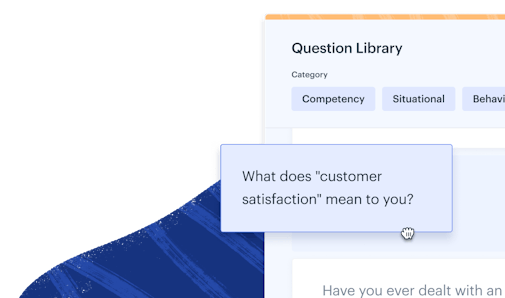200,000 Customer Conversations Later: What I Wish I’d Known From Day One


For the past three years, my job has been to build, scale and adapt the customer support function at Pipedrive.
We are now at more than 50,000 paid accounts, 12,000 support cases per month, an average customer satisfaction rating above 95%, a crew of 45 people working in multiple locations, channels and languages, serving users in more than 140 countries.
Reading the six lessons below, it may seem like this journey was a fairly linear progression. It wasn’t. We have failed, broken promises to customers, not delivered and made mistakes more times than I could possibly count. (I apologize to those who are reading this and have in fact not received great support from us. We aim to be better.)
Here are some of the more important lessons we’ve learned thus far.
1. There’s no replacement for great people
Customer support is sometimes stigmatized as an entry-level job anyone could do, a cost center for the company and a basic function that should ideally be replaced by automated solutions. If you subscribe to that school of thought … this post probably isn’t for you.
When you hire people who are merely OK, you get performance that is merely OK (or worse). The pain of realizing that you knew you were taking a risk with a “meh” person is what will hurt the most.
Conversely, the upside of spending more time in search of brilliant people is that once on board, they will figure stuff out on their own, come up with clever solutions, motivate each other and end up saving you a massive amount of effort and the company money, directly or indirectly — even if you pay them a bit more than market rate. Besides, who wants to spend their days around mediocre people anyway?
Even if you need to suffer a higher workload for another month, it’s nothing compared to the pain of hiring the wrong person.
Do not compromise. Spend time with them in the process; look at them from different angles.
To achieve this, we’ve set up a fairly rigorous process. Nobody gets hired in fewer than six steps (five interviews and a test task), no exceptions. As a result, the hiring rate for the customer support positions has been 2% of all applicants during the past two years, despite a constant need for more troops.
A big part of the reason why this percentage is so low is the requisite qualification level: To be able to have great conversations with customers in an international B2B environment, a person has to usually speak at least one foreign language, be tech and business savvy, understand specialized software, be a natural, empathetic communicator, and team player at the same time. When you apply all those filters, you’re left with a small number of people.
At times, it has been painful to stick with this process. Your instincts will say “get somebody, anybody, to come and put out the fire.” You will be better off if you manage to resist that urge.
Customer Service Interview Builder
Good interviews are at the heart of great hires. This tool makes it quick and easy to build a thoughtful interview process, from crafting job descriptions to asking the right questions.
Start building
2. Great people move on — deal with it
While you need to hire ambitious, smart, independent and empathetic people, you also need to accept that this is a job that has a “best before” date. You might have some specialized roles, seniors and managers within the support function, but more opportunities will always lie beyond your department. And that’s OK.
Think of it this way: It’s better to have a team member who does an amazing job for two years before moving on to another job within the company, than to have someone delivering mediocre performance for a decade.
Having an alumni network of support folks within the company is good for business and for you. People with a solid customer perspective in different functions means that decisions are made with customers in mind.
In our case, the majority of people leaving support have found other places internally. This includes people who have moved on to do localization, video production, user research, sales, product management, marketing and engineering.
At one point in time, I realized that 20 percent of the team was about to move to another department simultaneously. That was a moment of realization that we need rules for internal career advancement, which we ended up creating.
It’s a positive problem to have because it helped create the current situation, where there are almost no parts of the company that do not have anybody with significant customer support experience.
Internal growth from the support team gives the customer a voice in decision processes, where they normally would not have it, and that’s good for business every single time.
3. Change with the environment
In terms of the key tools, channels and processes, we’ve been through about 10 major changes, and each time has been painful. This should be accepted as the norm in a fast-growing company. What got you here will not take you where you want to go.
Letting support reps pick their own cases from a shared inbox is fine if you get 10 emails per day, but as volume grows, neither the tool nor the process is viable anymore. And while an expensive SaaS toolset might be a waste of money at 1,000 conversations monthly, it may be the only sensible solution at 10,000.
At least as important is to make sure you stop doing things that will not scale. Will this still work six months from now? What if you grow by 10 agents or 2,000 customers?
The biggest, and hands-down the most difficult, change of that variety for us was phasing out phone support. While it is amazing for providing a personal touch, if you consider the amount of time spent per call and the fact that one can only talk to one customer at a time, it works out to quite a luxurious use of resources. But then again, isn’t that the point — to smother customers with attention?
It is. But only if you can actually afford it, and your ability to afford it changes over time. In our case, we heavy-heartedly removed the phone numbers from the support center. The result? A spike in every single speed- and quality-related metric in the remaining channels. Answers in chats and emails became lightning fast and customer satisfaction shot up.
Does this mean that phone support is obsolete? No way. We wouldn’t have gotten this far without phone support. It’s simply a matter of what your situation is and which setup is correct at that point in time.
Try the customer support platform your team and customers will love
Teams using Help Scout are set up in minutes, twice as productive, and save up to 80% in annual support costs. Start a free trial to see what it can do for you.
Try for free
4. Subjective quality is good; objective quality is better
One of the most underdeveloped areas in the whole online customer service field, in terms of tools and processes, is the objective quality aspect of the interactions. A high bar in terms of quality can only be achieved through constant analysis of conversations. The only way to know whether you’re having the right conversations is to know what is being said.
The industry is booming when it comes to solutions for boosting speed and getting user feedback. So many great tools remove the barriers to interaction with your customer that real-time conversations are becoming the norm online and only laggards do not track customer satisfaction.
In our experience, a support crew needs a systematic process for analyzing customer conversations and providing feedback of some sort. We settled on a process where we analyze 10% of the total ticket volume every week. Every team manager and some senior agents have the responsibility to analyze cases and provide comments, if needed. Each week, the stats and feedback is reviewed, as part of a regular meeting.
This cycle provides team managers a way to detect gaps in knowledge and, for us as a group, peace of mind that we consistently check whether we are giving coherent answers to our thousands of customers and providing the amazing support we want to be providing.
A constant feedback loop for the agents enables the manager to find ways to improve in knowledge and skills and thus plan actions that will bring the whole crew to a new qualitative level. If you hire people like the ones described above, they will crave feedback and personal development. By measuring objectively, you can give that to them, and become better as a group.
5. You are what you measure
Performance is only as good as the criteria by which it’s measured. If you wish to bring about a certain change, you need to figure out the main indicator of that change.
In my simplified view, you start your (support) operation with very little data, find more and more data and eventually are able to narrow it down to a few main key performance indicators. In our case, we ended up focusing on CSAT, SLA% and first response time. You will have lots of other metrics on the background that will inform you, but the main ones need to become your obsession, if you are looking to make true progress.
The middle bit of this process, where you figure out what it actually is that you should focus on, is inevitably fuzzy. That’s fine — it will pass and make way for clarity and more often than not, a return to the basics.
Good customer support boils down to giving fast, useful answers, with a human touch. Figure out which KPIs describe those conversations.
At this point, everyone in the extended 70+ people department knows what the key metrics are for support. Emphasis on first response times and CSAT has been repeated in so many formats that even if you’re not paying a lot of attention, it becomes top of mind as “an important metric.” You can only a have a couple of “top of mind metrics,” especially for a larger group, so pick these carefully and stick with them.
6. Support is not just support
It’s marketing, sales, branding, user research, and so on. Especially in B2B, each interaction carries tremendous weight. What disguises itself as a simple interaction is in reality your customer making a lot of judgements about you, your product and your company all at once. Those judgments add up.
Many companies subscribe to this notion in theory, but not in practice.
That’s understandable, as especially in B2C, customers are exposed to many aspects of a brand and product and the impact of each of those aspects can’t always be separated, but in SaaS and in our example, it’s clear that customer support has a massive, long-term impact on conversion rate, NPS results, new sign-ups and even product management through direct feedback.
The archive of support interactions is a treasure trove of data. Opportunities to make good use of it are pretty much limitless.
The sooner your organization reaches this realization, the sooner you will find yourself on a path to providing epic customer support, impressive business growth and a stellar customer experience.
The Supportive Weekly: A newsletter for people who want to deliver exceptional customer service.